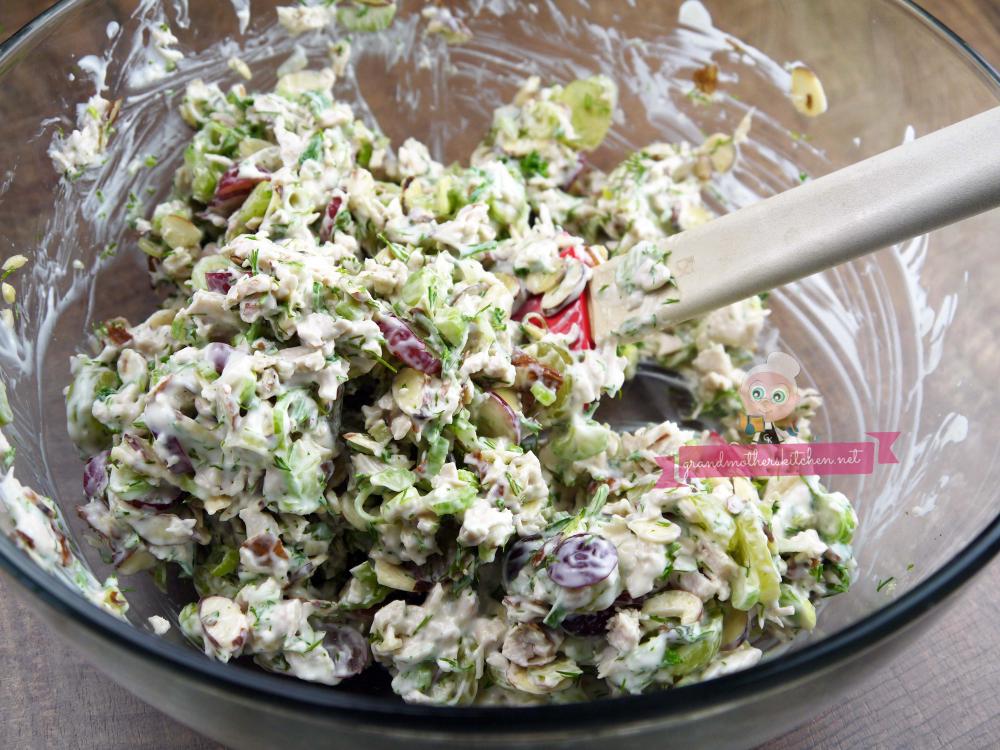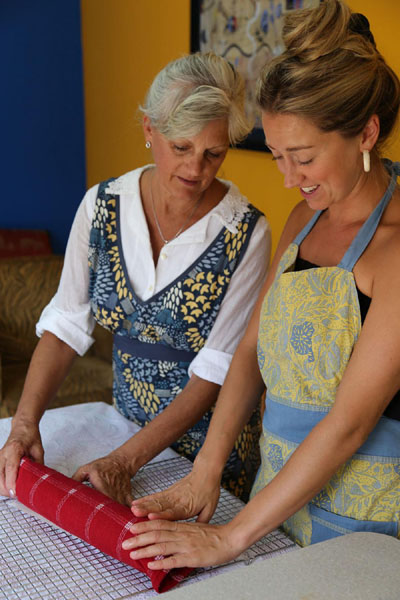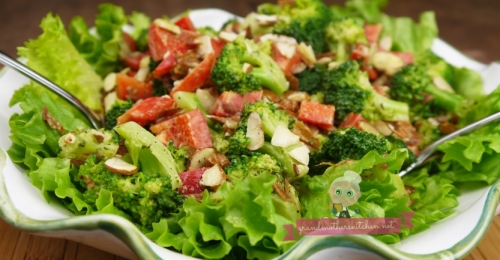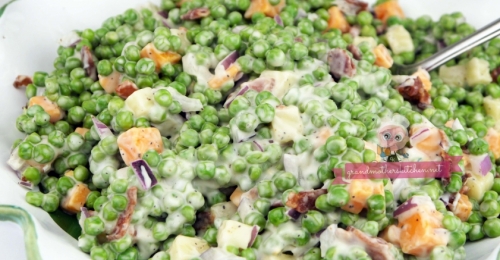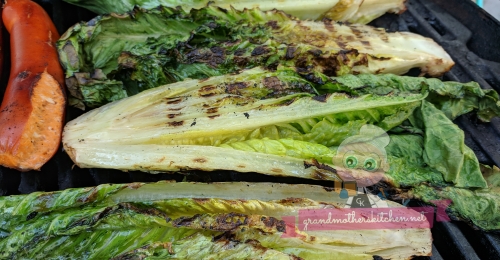Best Ever Chicken Salad
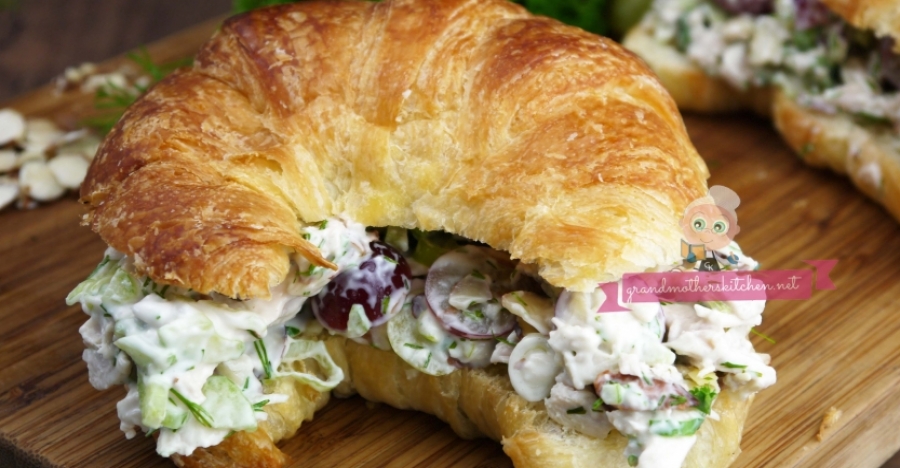
About this Recipe
It is normal to be skeptical when something is called the 'Best'. It is an overused word, and we admit we use it a lot when it comes to recipes and cooking in Grandmother's Kitchen. But how can you describe something that really tastes like the best version of that particular recipe that you have ever eaten? So, we will admit in Grandmother's Kitchen, many recipes get labelled the best because in our taste buds they simply are that good!
Grandmother's Tips for Best Ever Chicken Salad:
1. This yummy chicken salad recipe can be served on a croissant or other type of bread as a sandwich or you can serve it with as a salad.
2. This is one of the most wonderful salads. The combination of textures and flavors are always a hit and it is popular as a take along for an event such as potlucks or picnics.
3. It is great for lunches. We show it in a large croissant which makes a great serving for a hungry person but you can also buy the little croissants and make more of a finger sized serving.
4. Can be served in any type of bread sandwich as well.
Our Opinion of the BEST Chicken to Buy:
To us, the most important part is is that the chickens are being ethically and humanely treated. Chicken farming, like most food industries, is such a controversial industry where there are many versions of a story depending on who is the one telling it. Our best case scenario is personally knowing the farmers, seeing their farm and chickens and asking them personally about humane treatment of their flock.
In Canada, if I don't know the farmer directly, I will most likely want to purchase Certified Organic or SPCA Certified, both of which have much better than the minimum standard of care. Here you can look at the Comparisons of Canada’s Codes of Practice, SPCA Certified Standards and the Canadian Organic Standards.
Look for a SPCA Certified retailer in your Canadian location here: SPCA Certified Retailers.
Chicken Labeling Definitions in Canada:
The following information comes from the Chicken Farmers of Canada current definitions of chickens being raised in Canada.(1)
1) Organic chickens must follow the standards of the Canadian General Standards Board as well as the Organic certification board. Organic chicken must be fed organic feed that does not have animal by products, antibiotics, or any other supplementation that does not meet the certification's body.
2) Free range chickens MUST be allowed access to the outdoors. There is no legal definition of the term free range currently in Canada, however, so this can vary from farm to farm.
3) Free run chickens do not need to be raised outside, but they have to be be allowed to move freely in their barn. Technically, in Canada, all chickens are considered free run.
4) Halal, if you can find it, implies that the animals are well rested and handled in a way that minimizes suffering.
5) Hormone/ Steroid Free - is somewhat of a marketing tactic in Canada, since the use of hormone and steroids in Canada has been banned since the 1960s.
6) Kosher - means that the content and the way it was produced fits the dietary requirement of Jewish law.
7) Vegetarian grain fed - means that the chickens are only fed vegetable protein or soy. These can affect the color and flavor of the chicken meat. Out of interest, in nature chickens are in fact omnivores.
8) Raised without Antibiotics - means that the chicken was not treated in any way with antibiotics.
Chicken Labeling Definitions in the United States:
The following information comes from the USA National Chicken Council (2). Definitions in Canada and the USA have some differences, but the main issue in our books are the ethical treatment of the animals. We are currently working on providing source like we have above for Canada. If this is something important to you, you will benefit greatly from this Consumer Guide for Humanely Raised Labels on Animal Products.
1) Free Range - Just like in Canada, there is no specific government definition of free range. Approval for the claim is given on a case-by-case basis. Usually the USDA grants permission to use Free Range if the chickens have access to go outside for at least some part of the day, but they do not have to go outside. In reality, most chickens choose to stay close to their water and food which is generally inside. According the NCC, less than 1% of chickens in the USA are raised free range.
2) Farm Raised - this is confusing because technically all chickens are raised on farms, and there is no definition of what a farm must look like. Usually when restaurants use this term, however, they mean that the chickens were raised on a local farm, but again,there is no legal requirement for this.
3) Natural - In the USDA rules, 'natural' must mean no artifical ingredients, coloring ingredients, or chemical preservaties, and is only processed a minimal amount.
4) Organic - in the USA there are specific rules to be definied as organic, and anyone not following these guidelines may not label their food organic. Learn more about the USDA Organic Standards.
5) No Hormones Added - like in Canada, this is a confusing one because legally the use of artificial and added hormones are not allowed in any poultry in the USA. If a package chooses to state this, they are legally supposed to also say that no hormones are used in any poultry production.
6) “No Antibiotics Ever” or “Raised without Antibiotics” - this is a tricky one. The use of antiobiotics is currently the only FDA approved way of keeping chickens healthy. Some companies, however, choose not to use antiobotics and use other farming tactics. If this is successful, they can keep that label, and if not, then they cannot use the label on those chickens. Of note also, if chickens are treated with antibiotics, they are required to go through a withdrawal time before they are allowed to leave the farm. Also, the FDA and USDA claim that they use extensive testing to make sure grocery store products do not have antibiotics.
7) Enhanced Chicken Products - some raw chicken are enhanced with chicken broth. This must be clearly labeled with the list of ingredients.
8) Retained Water - this refers to water that may be added from essential procedures like the chilling process of ice cold water baths to reduce spoilage. If water is retained, it must be stated on the label.
9) All-Vegetable Diet - most poultry food is made from corn and soybean meal, with an addition of processed protein and fat from meat and poultry by products. This basic feed is regulared by the Association of American Feed Control. However, if a company does not use the animal ingredients, they can label their product 'all vegetable'.
10) Make in the USA - most chickens sold in the USA come from th USA, except for as small amount this is imported from Canada.
Ingredients
Makes: 3 cups of salad
2 chicken breasts - already cooked (we used this Instant Pot Chicken Breast Recipe)
1/2 cup seedless green grapes, sliced
1/2 cup seedless red grapes, sliced
1 cup almond slices with the brown outer casing on
2 celery ribs, sliced thin and chopped
3 green onions, chopped thin
2 Tablespoons fresh dill, chopped
1 Tablespoon fresh parsley, chopped
1 cup mayonnaise (we used Hellman's vegan)-choose your favorite
1 Tablespoon pure lemon juice or the juice of one fresh lemon
1 Tablespoon Dijon mustard
1 teaspoon Kosher salt
Freshly ground pepper
Directions
This recipe is using pre-cooked chicken, which can be cooked the day ahead in the oven or instant pot. You can also buy a pre-cooked rotisserie chicken. The chicken must be cold for this recipe.
1. Wash and dry all the fruits and veggies going into the recipe.
2. Slice the green and red grapes into rounds. Set aside.
3. Chop the celery ribs into thin pieces and then chop them a little smaller so they are a nice tiny consistency in the salad. Slice the green onions very thin.
4. Chop the dill and parsley into small pieces.
5. Take the chicken out of the refrigerator and cut into small pieces. Put into a mixing bowl.
6. Place the mayonnaise, lemon, Dijon mustard, salt and pepper into a second bowl and stir together. Set aside.
7. Combine the prepared grapes, almonds, celery, onion, dill and parsley in with the chicken and stir gently with a spatula until everything looks evenly distributed.
8. Add the mayonnaise mixture last and stir in gently to combine.
9. Put a cover on and refrigerate for one hour to infuse the flavors.
Serve in croissants, or other sandwich breads or serve with a salad.
ENJOY!
Return to this Best Ever Chicken Salad recipe or check out more recipes at Grandmother's Kitchen
Chicken Safety Tips: 1) Refrigerate chicken immediately for highest quality, 2) Don't leave chicken in the fridge for more than 2 days, 3) Wash countertops and cutting boards after chicken has been used right way, 4) Keep your chicken refrigerated until cooking time, 5) It is not advise to freeze chicken once it has already been cooked or thawed, 6) The recommended temperature for cooked chicken is 180° F for the whole carcass that contains the bone, and 170° F for the parts with bone, and 160° F for pieces that are boneless. (3)
This best ever chicken salad recipe can be stuffed in a sandwich, dolloped on top of lettuce, or added as part of a nutritious protein bowl. This salad has vibrant colour, flavour and texture from green herbs, grapes and a creamy dressing which will be addictive to everyone who eats it.
One of the best parts of chicken salad is that it can be a vessel for using up baked chicken breast or rotisserie chicken that you may have sitting in the refrigerator. This recipe specifies chicken breasts because they are leaner and higher protein than other parts of the chicken but even leg or thigh meat will work well if you prefer a richer taste.
The secret to producing the best chicken salad recipe is to cook the chicken so that it is juicy and tender. A helpful Instant Pot method is provided to ensure you start with the best chicken possible if you are cooking it yourself. Otherwise, the creamy dressing can help bring any leftover chicken back to life for another meal.
Mayonnaise is an integral part of chicken salad, and you can use whatever you feel comfortable with. There are several great mayonnaise varieties on the market so that you can get one with an oil variety you feel comfortable using. An unsweetened mayonnaise is excellent for this since you will get a lot of sweetness from the grapes and it will keep the caloric intake down.
If you can’t have mayonnaise for whatever reason, consider substituting with ripe avocado that has been pureed in a food processor. The avocado would change the appearance of the salad adding a green hue, but it would be no less delicious. Whatever you decide to use, this salad will become the base for one of the best sandwich recipes or topping for a salad.
References: (1)Wheel of Chicken: Understanding your choices from Chicken Farmers of Canada. (December 12, 2018) Retrieved from: http://www.chickenfarmers.ca/wp-content/uploads/2016/09/Wheel-of-Chicken_final.pdf Read more.
(2)National Chicken Council. What Consumers Needs to Know. Retrieved from: https://www.nationalchickencouncil.org/about-the-industry/chickopedia/ Read more.
(3)USA Poultry & Egg Export Council. Chicken Safety. Retrieved from: http://www.usapeec.org/ Read more.
(4) PETA. Animals Used for Free Range Meat. Retrieved from: https://www.peta.org/issues/animals-used-for-food/organic-free-range-meat/ Read more.
(5) How to Buy Real Pastured Poultry. The American Pastured Poultry Producers Association. Retrieved from: https://www.apppa.org/buying-guide/ Read more.
